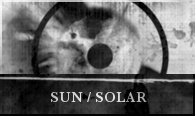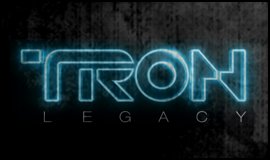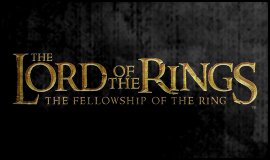
The winged sun is a symbol associated with divinity, royalty and power in the Ancient Near East (Egypt, Mesopotamia, Anatolia, and Persia). The symbol has also been found in the records of ancient cultures residing in various regions of South America as well as Australia.
Ancient Near East
Ancient Egyptian use
In Ancient Egypt, the symbol is attested from the Old Kingdom (Sneferu, 26th century BC), often flanked on either side with a uraeus. In early Egyptian religion, the symbol Behedeti represented Horus of Edfu, later identified with Ra-Harachte. It is sometimes depicted on the neck of Apis, the bull of Ptah. As time passed (according to interpretation) all of the subordinated gods of Egypt were considered to be aspects of the sun god, including e.g. Khepri.
Mesopotamia and the Levant
From roughly 2000 BC, the symbol spread to the Levant and to Mesopotamia. It appears in reliefs with Assyrian rulers and in Hieroglyphic Anatolian as a symbol for royalty, transcribed into Latin as SOL SUUS (literally, “his own self, the Sun”, i.e., “His Majesty”).
The Ancient Egyptian Winged Sun Disk can be found located above the computer screen
– Alien (1979)Hebrew
From ca. the 8th century BC, it appears on Hebrew seals, by now as a generic symbol for “power”. One example is a seal where the winged sun is flanked by two Ankh symbols and a Hebrew inscription translating to “possession of Hezekiah, son of Ahaz, king of Juda”. Numerous pottery finds dating to the same time bear the symbol together with the inscription lemelekh “king’s [property]”.
Compare also Malachi 4:2, referring to a winged “Sun of righteousness”,
But unto you that fear my name shall the Sun of righteousness arise with healing in his wings… (KJV)
Zoroastrianism
The symbol evolved into the Faravahar (the “visual aspect of Ahura Mazda”) in Zoroastrian Persia.
Greece
The winged sun is conventionally depicted as the knob of the Staff of Hermes.
Modern use
The ‘Golden Snitch’ represents the Ancient Egyptian Winged Sun Disk
– Harry Potter and the Philosopher’s Stone (2001)
The symbol was used on the cover of Charles Taze Russell’s textbook series Studies in the Scriptures beginning with the 1911 editions. Various groups such as Freemasonry, Theosophy, Rosicrucians and Unity Church have also used it.
Image & Source
WINGED SUN DISK
Winged Sun Disk – Entrance of Rosicrucian Park
This ancient symbol is commonly associated with Egypt, although it was also used by Persians and Assyrians and also by remote cultures in South America and Australia. It consists of a Sun orb flanked by two wings. The Egyptians traditionally depicted two serpents on the wings, representing the goddesses protecting Upper and Lower Egypt. Thomas Milton Stewart explains its mythological meaning:
“Horus, the Virgin-Born redeemer of the Egyptians, came intro the world to destroy the enemies of the great God, Ra. Therefore Horus changed himself into the form of the winged sun-disk, and took with him the Goddesses Nekhebet and Uatchit in the form of two serpents. After their successful war upon the enemies of Ra, Horus commanded Thoth, the God of Secret Wisdom, that the winged sun-disk with the erect serpents should be brought into every sanctuary of all the gods of the lands of the South and North.”
The author continues about symbolism:“The symbolic points in the foregoing legend are very old, for they belong to the earliest period. The winged disk, which as a hieroglyphic means “to become – to be – to create,” is a part of symbolical ornamentation of every temple, displayed over every gate and doorway, and a symbol of the earliest expression of life after death that has reached our day.”
– Thomas Milton Stewart, Symbolism of the Gods of the Egyptians and the Light They Throw on Freemasonry
The symbol is a representation of the ascension of the soul to the Divine, with the help of the serpents of wisdom and knowledge:“And the meaning of the winged Sundisk is this, – It is the symbol of perfect Aspiration towards the Divine, of Purification of the lower nature, and of final ascent into union with the One.”
– G.A. Gaskell, Egyptian Scriptures Interpreted Through the Language of Symbolism Present in All Inspired Writings
The winged sun suspended over the Worshipful Master’s throne in the Egyptian room of a Masonic Temple Grand Lodge
Egyptian mystics used the winged sun for ritualistic magic and invocations:
“‘Emblematic of the element of air, this consists of a circle or solar-type disk enclosed by a pair of wings. In ritual magic it is suspended over the alter in an easterly direction and used when invoking the protection and co-operation of the sylphs.”
– Hope, Murry, Practical Egyptian Magic
The winged sun is still being used today by groups like the Freemasons, the Theosophists and the Rosicrucians.“The Winged Globe is pre-eminently a Rosicrucian symbol, although the Illuminati may lay claim to it, and it may be admitted that it is of Egyptian origin. The Winged Globe is the symbol of the perfected soul making its flight back to the source of its creation in the Elysian fields beyond.”
– Swinburne, Clymer, The Rosicrucians Their Teachings
So this ancient mystical and magical symbol representing the perfected soul has graced entrances for millenniums and is still being used for the same purpose.
FURTHER READING

2010’s
2013
2012
2011
2010
2000’s
2009
2008
2005
2004
2002
2001
2000
1990’s
1998
1997
1991
1970’s
1979
1960’s
1968
First Published: Dec 9, 2011 – Last Updated: May 1, 2014


































You must be logged in to post a comment.